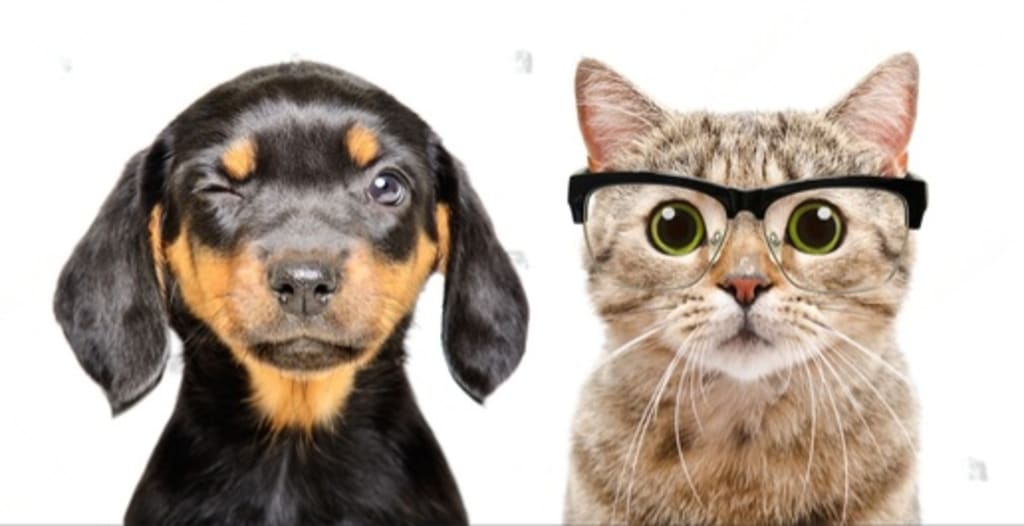A Fascinating Glimpse into the Diverse World of Animal Vision
Animal

Have you ever wondered what the world would look like with a different set of eyes? Not just from another person's point of view, but from a whole other creature's perspective. Animals perceive the world in ways vastly different from humans, with unique vision adaptations that shape their experiences. Let's delve into the intriguing realm of animal vision. The red-green colorblindness in dogs doesn't hinder their loyalty or ability to navigate the world. Their motion detection and enhanced low-light vision inherited from wolves showcase their evolutionary adaptations for activities like hunting and playing fetch, making them remarkable companions in various environments, even during dimly lit conditions.
Eyes For Bones:
Dogs, our loyal companions, navigate a world of limited color. Red and green appear as shades of gray due to their red-green colorblindness. With motion detection and superior low-light vision adapted from their wolf ancestors, dogs excel in activities such as hunting or playing fetch in the dark.
Purr-fect View:
Cats, known for their nocturnal antics, boast exceptional low-light vision. Their eyes, equipped with a tapetum, reflect light back onto the retina, granting them an advantage in the dark. While their daytime vision might lack richness, their ability to maximize cuteness with rapidly changing pupil sizes is unparalleled.
Egg-Sighting:
Birds, masters of the skies, see beyond the rainbow. Unlike humans, they perceive ultraviolet light, revealing a hidden spectrum of colors. This ability aids birds in communication, mate attraction, and navigation. Pigeons, with a 340-degree field of vision, offer a unique perspective high above the city.
Buzz Life:
Bees, crucial pollinators, see a world of blue and violet hues. Their ability to detect ultraviolet light guides them to flowers with specific patterns invisible to the human eye. The dance of colors in a flower meadow, illuminated by ultraviolet light, is a bee's equivalent of a vibrant rave party.
Shutterfly:
Caterpillars, practically blind, rely on other senses to navigate. Butterflies, with intricate eyes and multiple photoreceptors, perceive a colorful world. Their vision guides them to nectar sources and aids in mate selection, showcasing the beauty invisible to human eyes. This rich vision not only helps them locate nectar sources but also plays a crucial role in their fascinating process of mate selection, revealing a hidden spectrum of beauty beyond our human perception.
Eye Spy:
Flies, often wished to be a "fly on the wall," have compound eyes providing a 360-degree perspective. Although low-resolution, their rapid motion detection at 250 flashes per second ensures their survival. Witnessing the world in a fly's perspective is like watching an early YouTube video filmed on a potato.
Viperactive Vision:
Snakes, with pit organs sensing infrared radiation, possess a unique form of heat vision. Combining this with color vision and UV sensitivity, snakes adapt to their surroundings. Some, active at dawn and dusk, can see UV light, while others, active during the day, have lenses that block it.
Krill Bill:
The mantis shrimp, though known for its powerful punches, steals the spotlight with unparalleled vision. Detecting an astonishing 12 channels of color, including ultraviolet and polarized light, these marine creatures have eyes comparable to satellites. Their vivid perception of the underwater world sets them apart.
Each animal's vision unveils a distinct aspect of the world, showcasing the marvels of adaptation and diversity. From the loyal dogs' colorblind fetch games to the intricate vision of the mantis shrimp, the animal kingdom offers a kaleidoscope of visual experiences beyond human imagination.
The diverse ways in which animals perceive the world highlight the incredible adaptability and uniqueness found in nature. From the loyal dogs navigating a world of grays to the mantis shrimp's spectacular ability to see a vast array of colors and polarizations, each species brings its own visual wonders to the tapestry of existence.
About the Creator
Enjoyed the story? Support the Creator.
Subscribe for free to receive all their stories in your feed. You could also pledge your support or give them a one-off tip, letting them know you appreciate their work.






Comments (1)
Quite insightful